Greeenwich, that is the original one in London, home to the Meridian Line and Greenwich Mean Time, has featured several times in 35mmc. Bob Janes has used aspects of it to illustrate his informative articles, Michael Elliott did a Five Frames of the beach and, dare I say it, I’ve even attempted it myself.
As Maritime Greenwich is a UNESCO World Heritage Site this is understandable, it is inherently photogenic. But wander away from central Greenwich and there is also much of interest to discover. Head west towards Deptford Creek and it’s all modern riverside developments so up-market that there’s even a Waitrose now. Rather, head east and you’ll find a bit of old Greenwich displaying a much more workaday aspect.
It was here that I finished a film to test a Minolta XG1 a couple of weeks ago. The camera was a recent charity shop find and bought not for the camera per se, but for the lens: a Rokkor 45mm F2. I’d read good things about this budget late addition to the Rokkor MD range and as the camera body appeared to be functioning correctly (amazingly there was still power in the batteries) it seemed too good a bargain to turn down.
Taking along a Rokkor 28mm F3.5 for good measure, I was after subjects that would test the performance of the lens in real-life situations. I’d noticed this garage on previous strolls in the area and been attracted by its possibilities as a subject. As luck would have it the doors were open and there was a white car up on one of the ramps to offset the gloom of the interior.
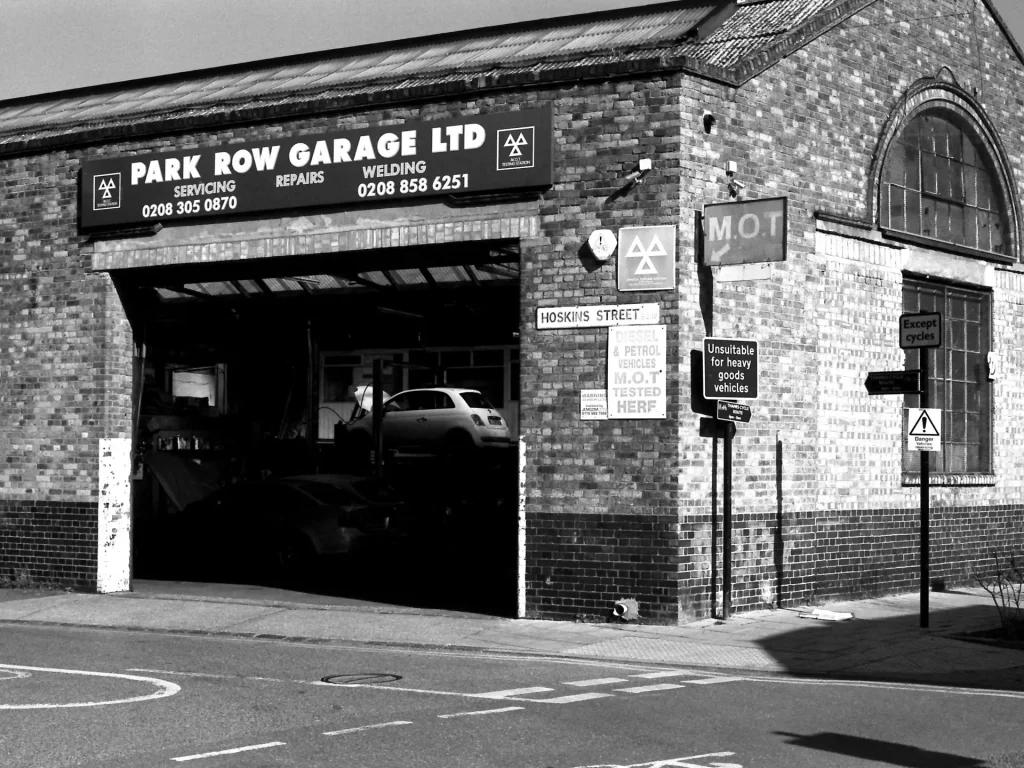
Not much wrong with the sharpness there, in fact to my eyes it’s verging on in-yer-face clinical sharpness.
Opposite that garage is Greenwich Power Station. Built 1902-1910 to supply electricity to London’s tram network and then to the Underground it was originally coal-fired and then oil-fired. It is now gas-fired and capable of serving as a standby emergency power supply for the Underground. As befits its strategic importance it is surrounded by high walls which are now topped with razor wire and security cameras. Look carefully at the wall near where I stood for the shot of the garage and a couple of relics from its past can be seen.
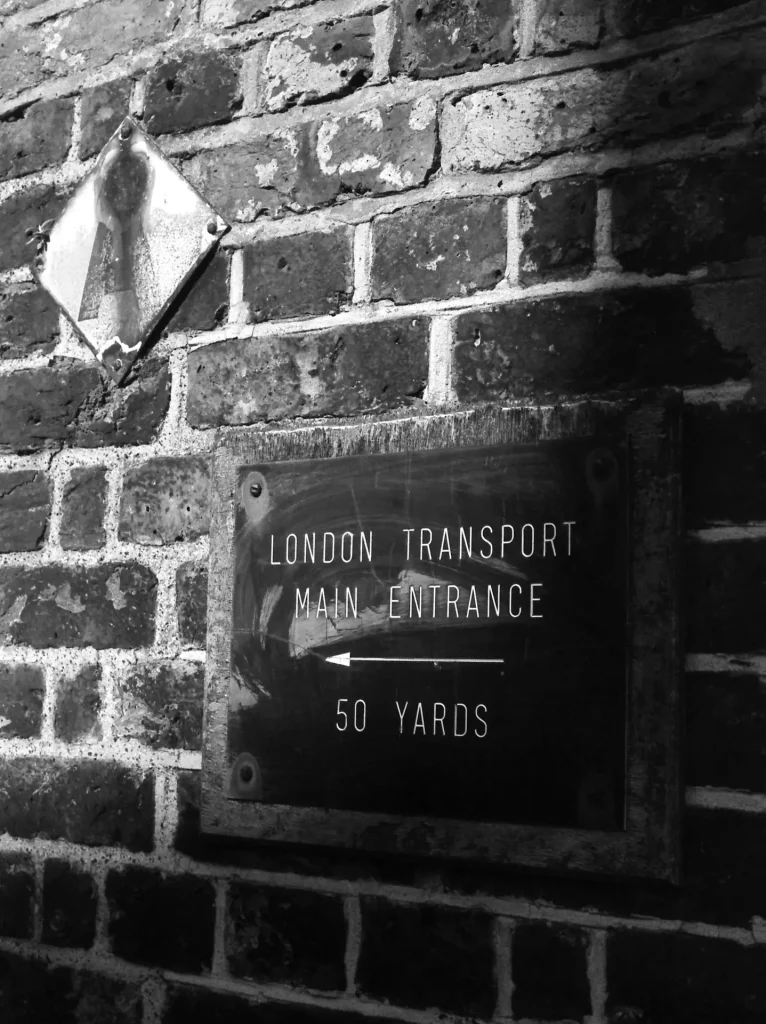
As London Transport became Transport for London in 2000 and imperial measurements started to be phased out in the late 1960’s the first sign probably dates from the 1950’s. The enamel A sign denotes Assembly Point in case of fire or other emergency and is of at least WW2 vintage.
Coal for the power station was off-loaded from barges on the Thames via a purpose-built jetty that was originally equipped with cranes and a narrow-gauge railway. The jetty is still there and again my luck was in, the tide was out enabling me to get down onto the foreshore and admire its elephantine feet.
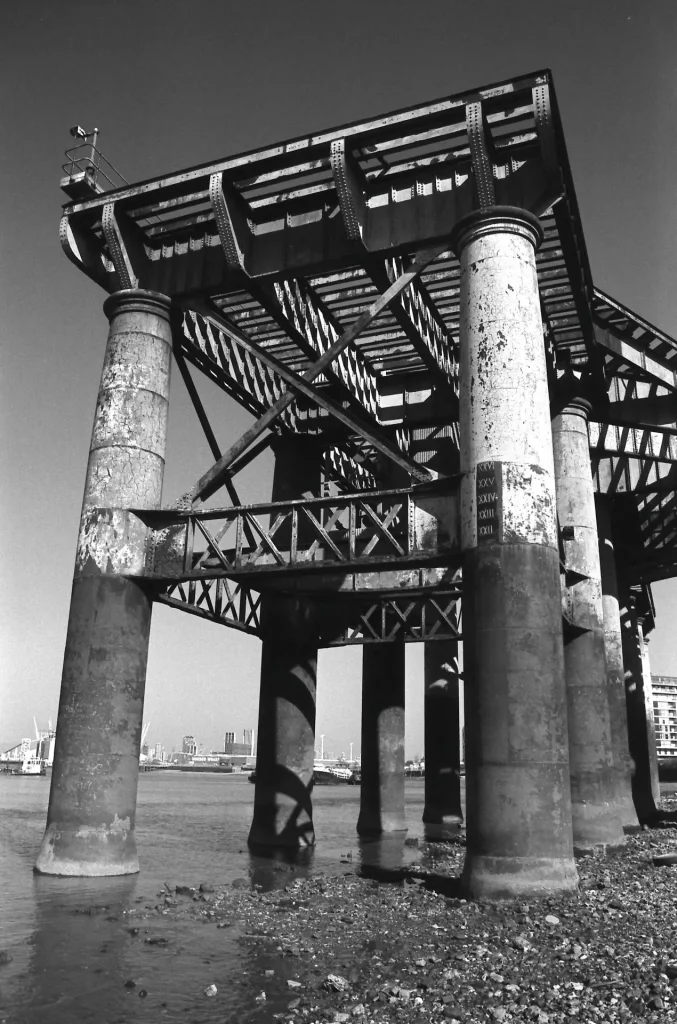
Back towards Greenwich is the power station’s diminutive neighbour. Trinity Hospital and Alms Houses pre-date the power station by almost three hundred years having been built 1613-1614. Like the power station, as an institution it still functions as intended although it is a more modern block that offers sheltered accommodation. The wall opposite its riverside entrance provided early flood defence the necessity of which is underlined by the signs marking the previous high water levels, the wardens referred to being the custodians of the hospital at the various times.
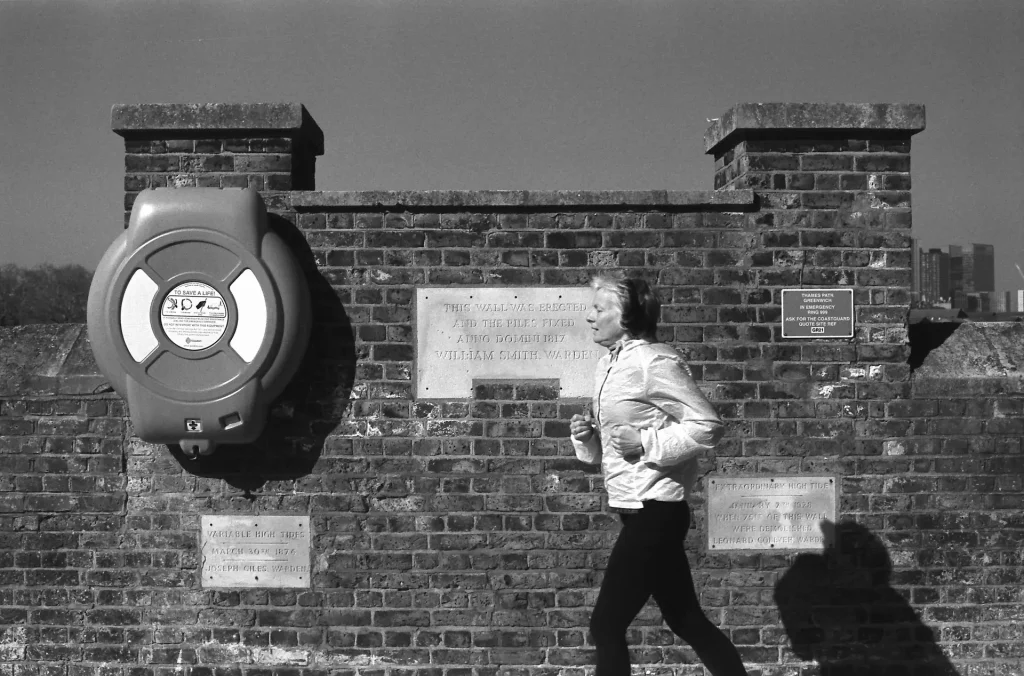
From here an alley leads to the Trafalgar Tavern, a popular watering hole for tourists situated as it is right on the edge of the Heritage Site. It can rightly claim to be a Victorian pub as it was built in 1837, the year Victoria succeeded to the throne, and is known to have been frequented by Charles Dickens. It did its bit in WW1 when it served as a home for seamen, and in WW2 as flats for naval officers. It has now been “restored” in what is best described as a Neo-Victorian style.
There weren’t many tourists though on the day I passed by in early March, just this guy working from home on the terrace.
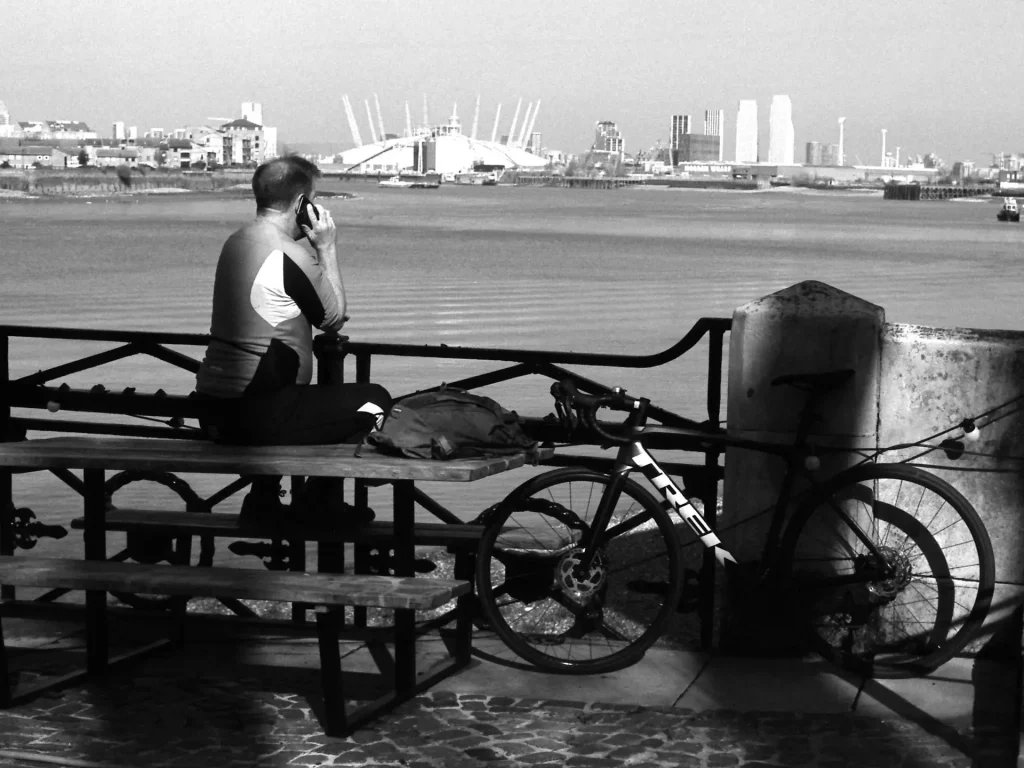
And that was the last frame. The film was Fomapan 100 developed in R09 1:50 and to say that I’m pleased with the performance of the 45mm Rokkor is an understatement, it really is a budget beauty.
More information on this area than I can squeeze into a Five Frames can be found in this article on the A London Inheritance website which has a map and general photographs of the buildings mentioned, and to which I am indebted for some of the historical background.
Thanks for reading.
Share this post:
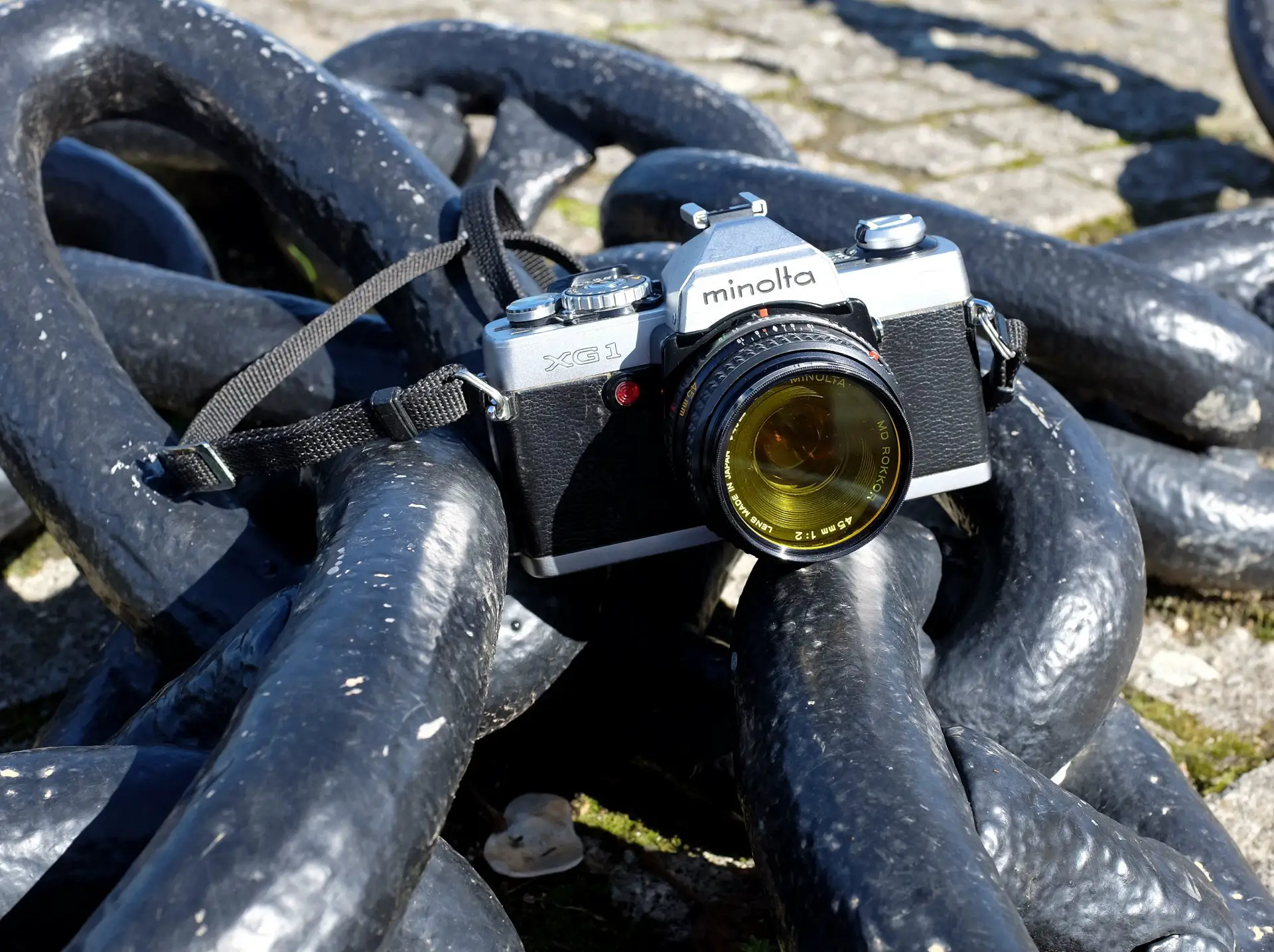
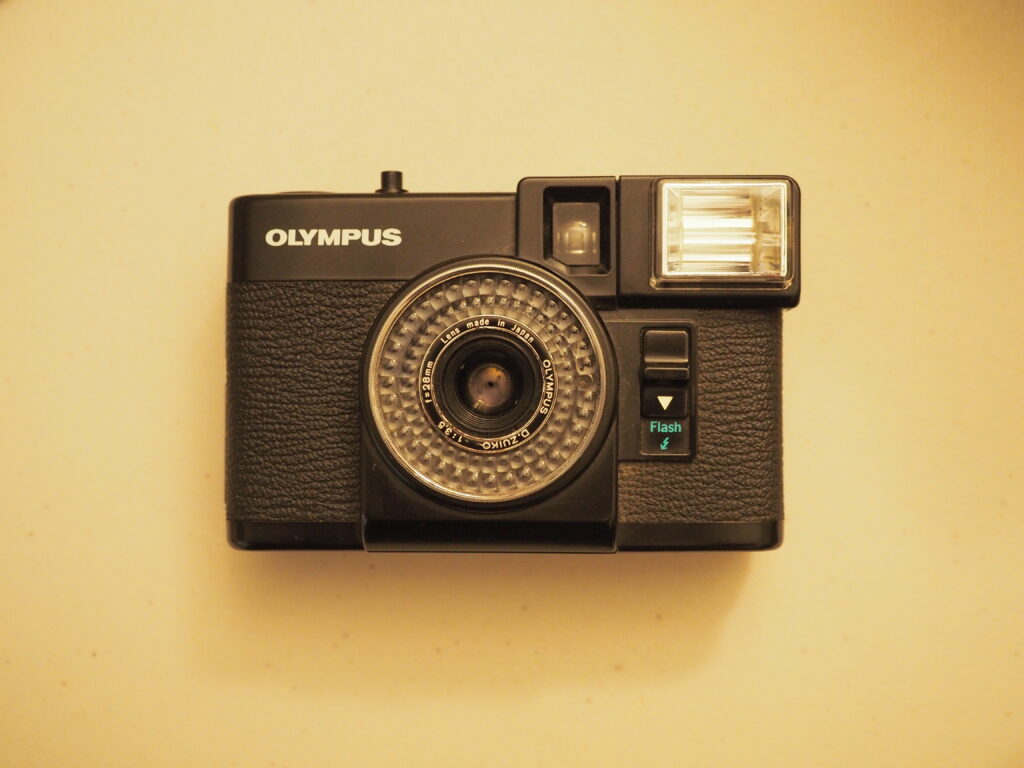
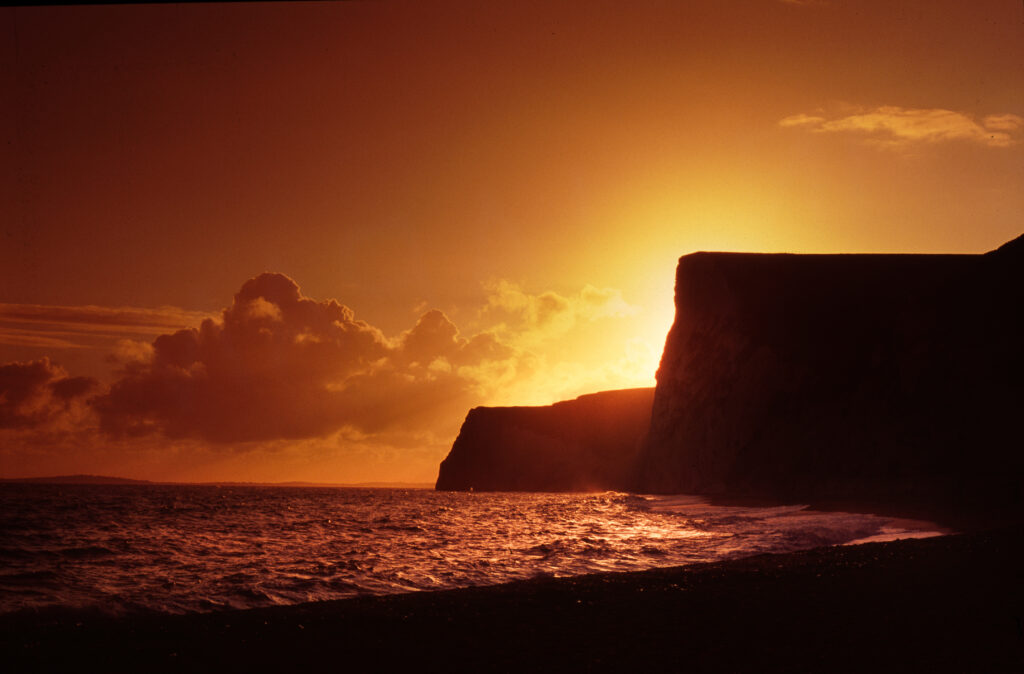
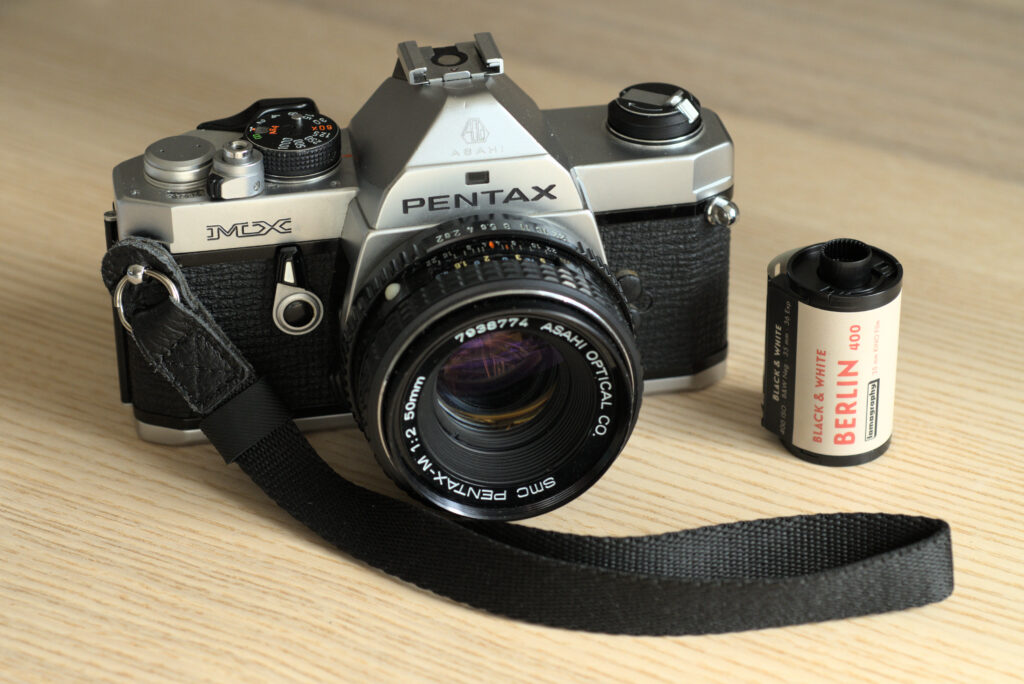
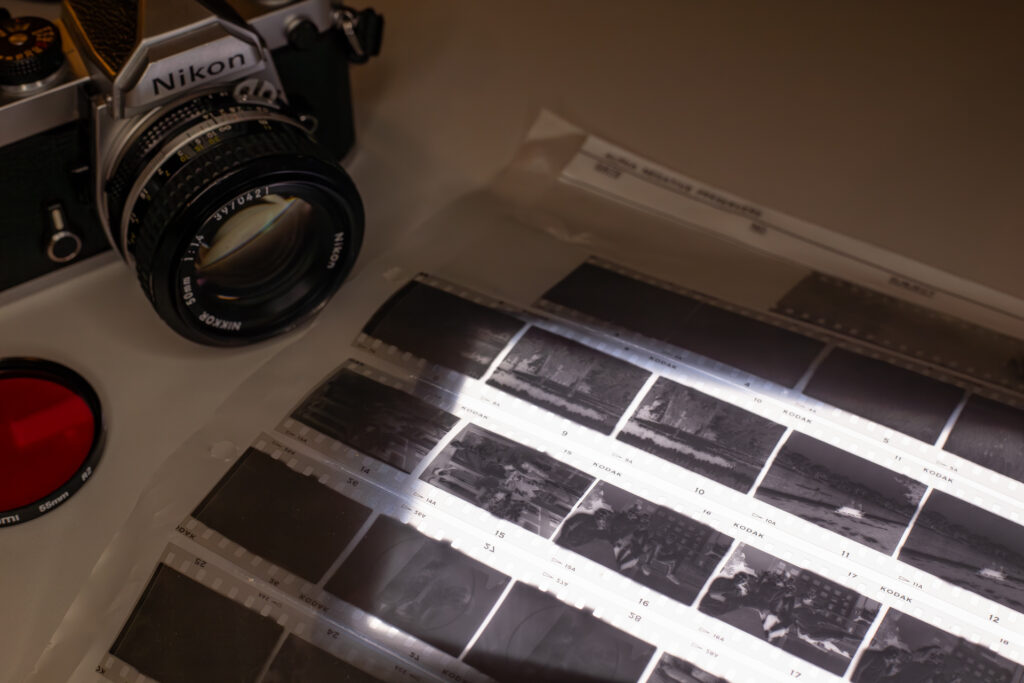




Comments
Terry B on 5 Frames With a Minolta XG1 in Not so Touristy Greenwich – By Peter Roberts
Comment posted: 05/04/2022
Comment posted: 05/04/2022
Stefan Wilde on 5 Frames With a Minolta XG1 in Not so Touristy Greenwich – By Peter Roberts
Comment posted: 05/04/2022
What a beautiful set of pictures! I find the jetty shot impressive, but I enjoy the one of the lady jogging past the riverside wall even more! As to camera and lens I can only say that they clearly were up to the job. Could you please elaborate a little more on the development and con version to digital? I have used the same combination of film and developer but didn't achieve such nice contrast as you did.
Gruss aus Hamburg!
Comment posted: 05/04/2022
Dave on 5 Frames With a Minolta XG1 in Not so Touristy Greenwich – By Peter Roberts
Comment posted: 05/04/2022
PS. “Signage”. Collective noun for signs.
Comment posted: 05/04/2022
Jasper T Kauth on 5 Frames With a Minolta XG1 in Not so Touristy Greenwich – By Peter Roberts
Comment posted: 05/04/2022
Comment posted: 05/04/2022
John Bennett on 5 Frames With a Minolta XG1 in Not so Touristy Greenwich – By Peter Roberts
Comment posted: 05/04/2022
Proof positive that you don't need a $3,500 rangefinder (whose name starts with the letter L) to get good results.
Comment posted: 05/04/2022
JR Smith on 5 Frames With a Minolta XG1 in Not so Touristy Greenwich – By Peter Roberts
Comment posted: 05/04/2022
Comment posted: 05/04/2022
Bob Janes on 5 Frames With a Minolta XG1 in Not so Touristy Greenwich – By Peter Roberts
Comment posted: 05/04/2022
We really should try to get a Greenwich photowalk going at some point - from the Canonet project I know we have few locals at least - and for those who are not local, Greenwich is well worth a trip across town!
Comment posted: 05/04/2022
Jens Knappe on 5 Frames With a Minolta XG1 in Not so Touristy Greenwich – By Peter Roberts
Comment posted: 05/04/2022
Use it on Minolta cameras ( SR-T 303, XG-M, XG 9, X-500, X-700 ) very often.
This lens can be used indoors even with open aperture with very good results.
Comment posted: 05/04/2022
Khürt Williams on 5 Frames With a Minolta XG1 in Not so Touristy Greenwich – By Peter Roberts
Comment posted: 07/04/2022
Comment posted: 07/04/2022
Dan Castelli on 5 Frames With a Minolta XG1 in Not so Touristy Greenwich – By Peter Roberts
Comment posted: 07/04/2022
I live about 90 minutes from another “Greenwich” here in Connecticut. I think it’s the wealthiest town in the US; and if not, among the top 5. I don’t think there is an ‘other side’ of Greenwich here in the US.
I love massive man made structures, so the coal jetty is my favorite.
I use the little brother of the 45 mm lens on my Leitz-Minolta CL - the 40mm m-Rokkor.
Tiny & lightweight, but sharp.
Thanks for your post, I really enjoyed reading it.
Dan
Comment posted: 07/04/2022
Huss on 5 Frames With a Minolta XG1 in Not so Touristy Greenwich – By Peter Roberts
Comment posted: 08/04/2022
p.s. a snaggle of signs...
Comment posted: 08/04/2022
James Billings on 5 Frames With a Minolta XG1 in Not so Touristy Greenwich – By Peter Roberts
Comment posted: 08/08/2024
Comment posted: 08/08/2024